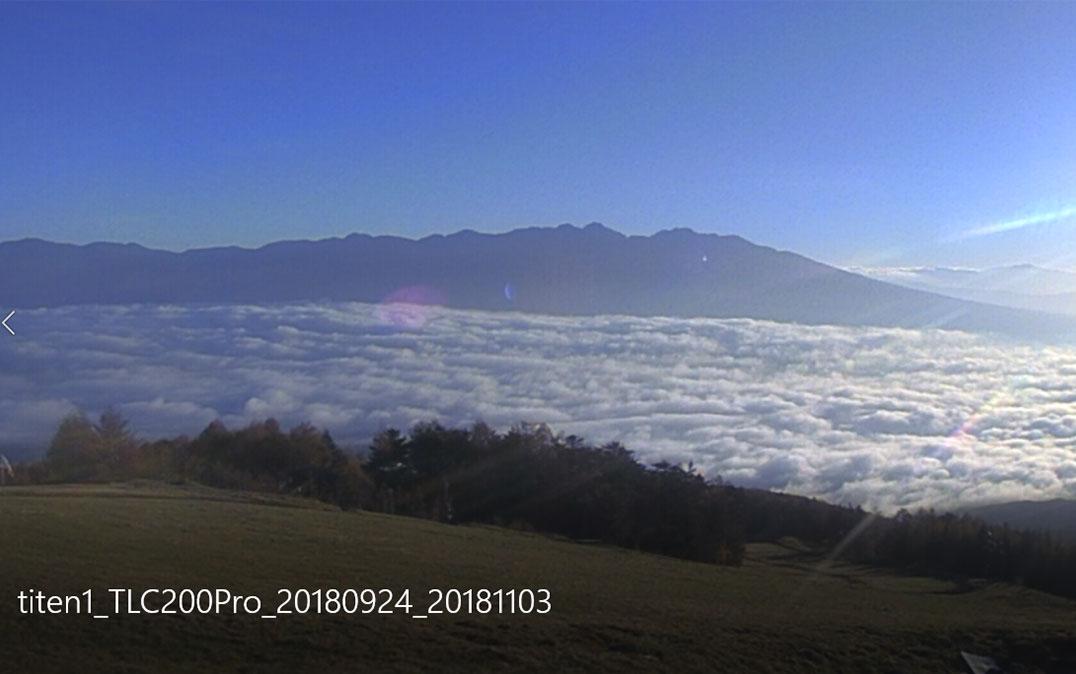Research News
Popular Alpine Clouds Yield Secrets

Researchers pinpoint areas in the Japan Alps where "sea of clouds," a popular tourist attraction, tend to form at night
IBARAKI, Japan—Sea of clouds (SOC) occurs when low-level clouds form in mountainous areas, resembling an ocean when seen from higher elevations. Using camera, sensing equipment, and satellite data, University of Tsukuba researchers Yuki Kobayashi and Kenichi Ueno have identified some important factors in how these clouds form, as well as specific areas in the Japan Alps where they occur frequently.
SOCs are characteristic of mountain regions and frequent in the early morning. SOCs also have tourism value, but to date there have been few attempts to analyze in detail how and where such clouds form. Kobayashi and Ueno made observations at Fujimi Panorama Resort in Nagano Prefecture over three years, during the warm period of May to November. They set up a time-lapse camera that operated from the middle of the night until early morning. Automated sensing equipment was also deployed on the slope to detect meteorological phenomena at various altitudes in the presence or absence of SOCs. Moreover, data from Japan's Himawari-8 weather satellite helped predict where and how SOCs were likely to occur.
Three SOC patterns were observed: large-scale, east-forming, and west-forming. Large-scale SOCs were most frequent in the early morning. Small-scale occurrences tended to hug the western or eastern side of the valley. Analysis of the differences between days when one or the other type occurred demonstrated that conditions on days of west-forming clouds were similar to those for large-scale clouds. Thus, west-forming clouds were incompletely-formed large-scale SOCs. East-forming SOCs were observed to be the product of low-level orographic clouds ascending the slopes of Mt. Yatsugatake.
Using satellite data, the researchers developed an algorithm to predict the occurrence of nocturnal low-level clouds corresponding to large-scale morning SOCs. SOCs occurred frequently in 12 target areas (large valleys or basins) in the inland Japanese Alps, but were infrequent in coastal areas and above 2,000 meters. When SOCs occurred in half or more of the target areas, 67% of the time they were associated with a subsidence inversion layer from a synoptic-scale high pressure system. In addition to nocturnal radiative cooling conditions, synoptic-scale subsidence inversion layers thus play an important role in forming large-scale SOCs.
The results of this research are expected to lead to new research themes linking mountain meteorology and tourism. Further research is planned, e.g. to verify the algorithm's applicability to other mountainous regions, look for SOCs in regions of potential interest, and compare results with the present research.
###
The research was carried out with support from Fujimi Panorama Resort, including authorization to use ski slopes and help in placing research equipment.
Original Paper
The article, "Tendency for a Sea of Clouds to Occur at Night in the Japanese Alps Region Based on Surface Observation and Satellite," was published in Tenki (Journal of the Meteorological Society of Japan) Vol.68, No.8.
Correspondence
Associate Professor UENO Kenichi
Faculty of Life and Environmental Sciences, University of Tsukuba
Related Link
Faculty of Life and Environmental Sciences





